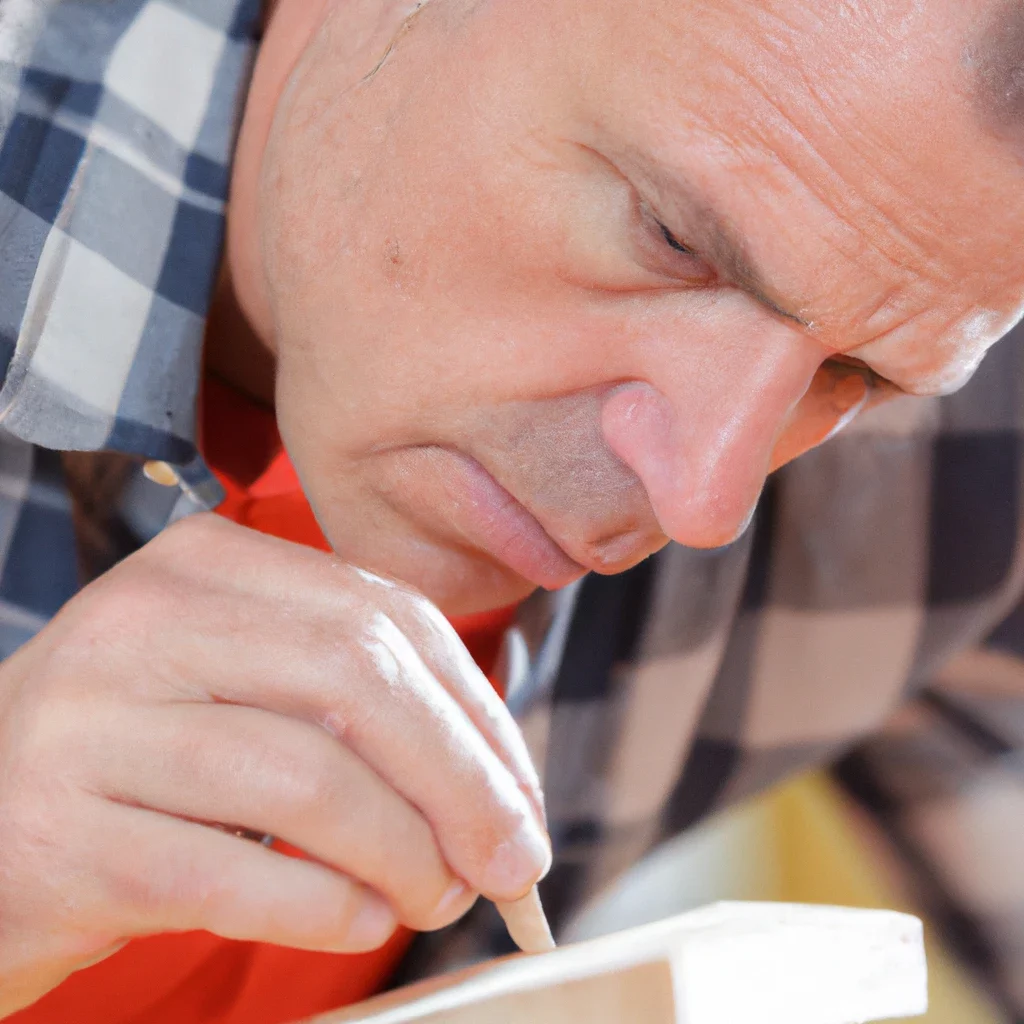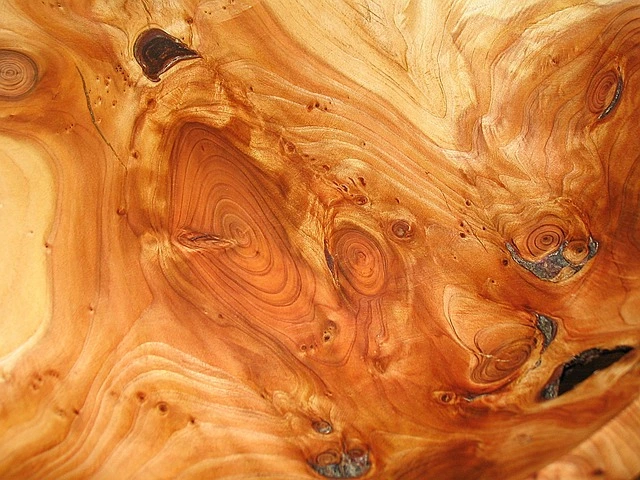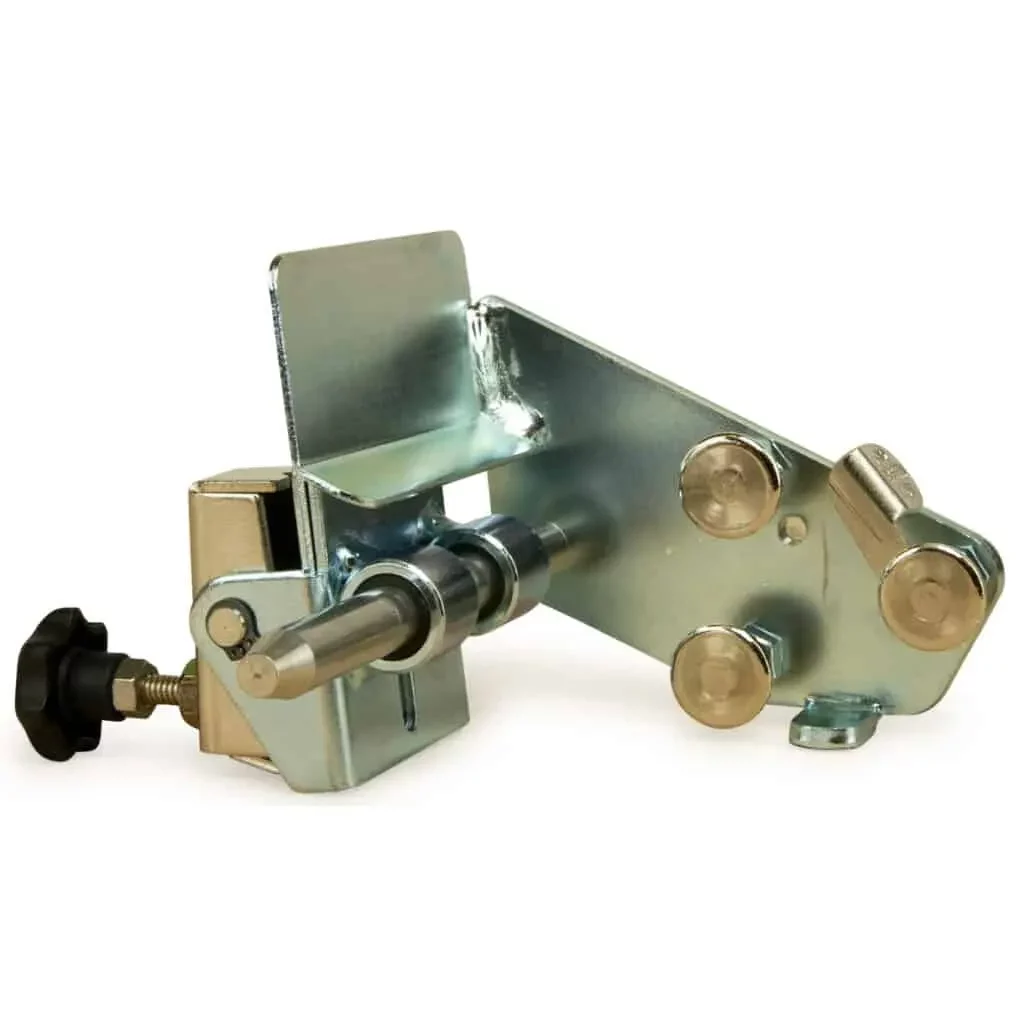Essential Woodworking Techniques
Woodworking is the art of creating objects from wood. To achieve quality results, it’s important to use proper techniques, acquire the right skills, and have the correct tools. Measuring wood accurately is crucial. Without the right measuring tools, you may have incorrect measurements and a finished project that falls short of expectations.
Choosing the right wood is also important. Study the wood grain to learn how it affects the wood’s strength and workability. Keep your tools sharp to ensure precision and safety. Pay attention to your methods, and learn more about the most common joinery techniques to improve your woodworking skills.
For example, you may want to use hand tools for woodworking or learn about common woodworking joints like mortise and tenon or dovetail joints. You can create beautiful and functional woodworking projects by honing your skills and expanding your knowledge.
Technique 1: Measuring and Marking Accurately
The importance of accurate measuring and marking in woodworking
Measuring and marking with accuracy in woodwork gives you precision. With precision, you can remodel and renovate your projects. Measuring, cutting, shaping, and joining are done with attention. Without accuracy, you will not have the desired finished look that you expect. Here’s a good resource for measuring and marking techniques.
Keep checking your measurements using measuring instruments during each processing phase for higher productivity. There will not be any room for errors, unexpected events, or production interruption. The measurements give birth to reliable decision-making.
You can easily access measurement data which helps support data-driven choices throughout the project life cycle. Marking out and measuring ensures materials fit together. Marking out and measuring gives you the appropriate tool to suit the material.

Tools and techniques for measuring and marking
Get a pencil to mark lines and centers for cutting or joining. Pencil marks are easy to remove afterward (Annitashousekeeping.com). Use a sharp pencil for thin, light lines that do not engrave the workpiece. Steel rules measure materials for cutting or joining. Use flat against the side and bottom edges so that measurements are from one consistent spot.
Try square to help draw perpendicular lines on materials to mark out the sides of a woodwork joint. The try square gives you a line at right angles to an edge.
The marking gauge stock should be flat against the side of the workpiece. Do not dig the spur into the material to be cut. Run it over a few times until an indented line is in the wood. A cutting gauge cuts a line into wood parallel to an edge to mark the bottom of a woodwork joint. The stock has to be flat against the side of the workpiece. Ensure the cutting tool goes into the workpiece and makes a mark.
The mortise gauge scribes a double line parallel to an edge. Two sharp spurs should be adjusted and set to the mortise chisel’s width before marking the workpiece. The stock needs to be flat against the side of the workpiece. Run it over till a scored line between the two points. The measuring tape features a thinning sheet in a rubber case labeled with numbers. It can measure at least 5m long.
Tips for ensuring accurate measurements and markings
- Choose high-quality measuring tools.
- Always use a crow’s foot.
- Use a tape with greater standout.
- Ensure that you measure every piece accurately and mark off your cuts perfectly.
Technique 2: Understanding Grain Direction
How does grain direction affect the strength and appearance of a piece of wood?
Wood is stronger in the direction parallel to the grain. Wood panels’ strength and stiffness properties are greater in the direction parallel to the strength axis than perpendicular. Move the tool along the wood or the wood across a cutter so the cutting edge does not dig under the fibers and lift them. An understanding of the grain direction helps you get clean, tear-out-free cuts.
Splitting wood with the grain breaks lignin bonds, and when you break across the grain, you snap cellulose fibers which are much harder. To control the wood’s strength, pay attention to the grain direction. Orient the grain so the fibers support the load. Grain makes wood appealing to the eye but makes it difficult to work.

Tips for identifying grain direction and understanding how it will impact a project
- Use your fingernail against the wood to determine the direction of the grain. When your nail catches, that means you are moving against the grain. Wood plane the other way, with the grain.
- To determine which feed direction goes with the grain, look at one of the adjacent edges and how the grain runs off toward the face you are planning.
- Look on the face of the timber for grain.
- Feels the timber
- Look at the edge.
How to work with the grain for optimal results
Look at the side grain, so you can see how the grain goes off. Check the face grain and figure. Check knots in your wood.
Technique 3: Choosing the Right Wood
Different types of wood available for woodworking projects
There are two types of wood available for woodworking projects. These are softwoods and hardwoods. The difference between softwoods and hardwoods comes down to the tree harvested from. Softwoods are from conifer trees, which produce cones and have needles. Some softwood trees include fir, redwood, pine, cedar, and spruce.
Hardwoods are from trees that do not produce cones or needles. Hardwood includes walnut, cherry, oak, mahogany, and maple. Cedar is a straight-grain wood with an aromatic scent. Pine is durable, sustainable, and affordable. Redwood is moisture-resistant. Fir is strong, and spruce is hard.
The properties of different woods affect their suitability for different projects.
The wood properties that affect their suitability for different projects are color, odor, gravity, moisture content, grain, shrinkage, swelling, strength, hardness, weight, and stability. Regarding moisture resistance, all wood is porous, but to a certain extent.
If you intend to work on projects that evolve around water, choose a wood type with more resistance to moisture, such as redwood. Durability, appearance, and quality also contribute to the specification and selection of the types for furniture and joinery production.

Tips for selecting the right wood for a specific project
Selecting the right wood for a specific woodworking project is crucial for achieving the desired result. Here are some tips to help you choose the right wood:
- Consider the Project’s Purpose and Location: The purpose and location of the project will dictate the type of wood you should use. For example, if the project is exposed to moisture or sunlight, choose a wood resistant to weathering.
- Look for Durability and Strength: Certain types of wood are known for their durability and strength, such as oak, maple, and mahogany. Consider using these woods for projects that require sturdiness and durability.
- Visual Appeal and Workability: The visual appeal of the wood and its workability should also be considered. Some woods are easier to work with than others, and some have distinct patterns and colors that may be desirable for the project.
- Budget and Availability: The wood’s cost and availability should also be considered. Some woods may be more expensive or harder to find than others.
- Level of Difficulty: Consider the project’s difficulty level and choose a wood appropriate for your skill level. For example, if you’re a beginner, choose a wood that is easy to work with and forgiving of mistakes.
- Sustainability: Consider the environmental impact of the wood you choose. Look for woods that are sustainably harvested and have a low environmental impact.
- Finish and Colour: The wood’s finish and color should also be considered. Some woods have a natural finish and color that may be desirable for the project, while others may require staining or painting.
- Check for Defects: Finally, check the wood for defects such as knots, cracks, or warping that may affect its suitability for the project.
Considering these factors, you can choose the right wood for your woodworking project and achieve the desired result.
Technique 4: Sharpening and Maintaining Tools
The importance of sharp and well-maintained tools for woodworking
Sharp tools produce better work with less effort (Nurserymag.com). Your wood tools become safer because you do not have to force them. Use less pressure behind the cutting edge. Sharpen your plane and chisel blades for safety. Woodworking poorly maintained tools can easily cause harm.
Tools and equipment that are well-sharpened make a difference on the job site. Sharpening them is maintaining the health of your wood tools. That keeps ease of use lasting much longer, helping you work faster and more efficiently. Move on to the next job sooner, increasing your success.
Proper care and maintenance of your hand and power tools make any repair project easier, safer, and more successful. It also saves you money because the better they are cared for, the longer they will last.

Types of tools that need to be sharpened and maintained
Maintaining your woodworking tools is crucial for achieving precise and efficient cuts. Here are some common tools that require regular sharpening and maintenance:
- Knives: Whether using a carving knife, utility knife, or box cutter, knives require frequent sharpening to maintain their sharpness and precision.
- Chisels: Chisels are essential for shaping and carving wood, but they can become dull quickly with frequent use. Regular sharpening is necessary to ensure they maintain their sharp edge.
- Saws: Handsaws, table saws, and circular saws are all important tools in woodworking. However, dull blades can lead to rough cuts, splintering, and kickbacks. Regular sharpening is necessary to maintain their effectiveness.
- Planes: Planes are used for smoothing and shaping wood, but a dull blade can leave rough, uneven surfaces. Regular sharpening is necessary to ensure a smooth, even finish.
- Drill Bits: Drill bits can become dull with frequent use, leading to imprecise and uneven holes. Regular sharpening and maintenance are necessary to maintain their effectiveness.
By regularly sharpening and maintaining your woodworking tools, you can ensure they perform at their best and achieve precise and efficient cuts. Remember, proper maintenance is essential for the longevity and effectiveness of your tools.
Tips for sharpening and maintaining tools
- Start by removing any surface rust or dirt on the tool using steel wool or a wire brush.
- Give the tools proper storage and usage.
- Work in one direction and try to maintain a consistent angle.
- Sharpen the edge without removing too much metal.
- Use 300-grit sandpaper to remove any burrs on the back side of the blade.
- Be patient.
- Keep the tool steady.
- Store your tools in a dry and protected area.
Technique 5: Mastering Joinery Techniques
The importance of proper joinery techniques in woodworking
Good joinery will keep the sides of a case piece flat. Keep it from cracking. It also keeps drawers running in and out, keeping the structural integrity of a piece solid for years. For durability, consider proper joinery methods. When building a durable wood piece intended to last a lifetime, master joinery techniques. The correct type of joinery makes your project last for a lifetime.
Wood joinery allows woodworkers to assemble different components of a piece into a structurally sound project. As a result, you get quality work. Select the right type of wood joint to help make things easier. There are almost five common types of woodworking joints that you can use in your projects.
Types of joinery techniques, such as mortise and tenon, dovetail, and biscuit joints
The types of woodworking joints include butt Joint, biscuit joint, bridle, dado, dovetail, finger joint, lap wood, Mortise, and Tenon, Pocket-Hole joinery, rabbet, and Tongue and Groove joint.
Mortise and Tenon Joints
Mortise and tenon joints have gained popularity due to their strength. The wood joint does not butt both pieces together but requires one piece of wood to move into the other. Mortise is the hole or cavity in the receiving wood piece.
Dowel Joints
A dowel joint is a joint that connects two pieces of wood by drilling dowel holes in each piece. It uses a wooden peg which is the dowel, to attach them. Drill a few holes, and insert a few pegs. Dowel joints can form strong joints without mechanical fasteners like nails and screws.
Butt Joints
A butt joint is one of the simplest methods of joining two pieces of wood together. Place the end of one piece on the surface area of another in a right-angle formation. It is the weakest type of wood joint but is used in wall framing on construction sites and other simpler jobs. Its strength depends on the kind of reinforcements used.
Pocket Hole Joints
This wood joint is one of the most popular woodworking joints. It has pocket hole screws, but two drilling operations are required. It counterbores the pocket hole, which takes the screw head contained by the piece. It also includes drilling the pilot hole with a centerline that must be the same as the pocket hole. The pilot hole allows the screw to pass through one piece to the adjoining piece.
Tips for mastering each technique
- Always cut the mortise first and then size the tenon to fit snugly.
- For through mortises, cut halfway through, flip the board and work from the other side.
- Increase a butt joint’s strength by adding wooden gussets or metal brackets.
- For tapered joints, use a stronger fiberglass-mesh tape.
- To begin doweling your joint, align the two boards to be mated into their final positions.
- Use tools properly.
- Troubleshoot common issues.
Conclusion
In summation, five essential techniques discussed in the article make your projects satisfactory. Measurements have to be accurate so that you get the desired product. Follow the grain direction for a desirable finish and durability.
Choose the right wood that matches your project. Keep your blades and other tools sharp for accuracy and safety. Master these techniques for successful woodworking projects and quality products. Reduce working time. Equip yourself more by learning and improving your skills.
FAQs
What are the essential techniques for woodworking?
Woodworking is a craft that requires skill and patience to produce beautiful and functional projects. Here are some essential techniques for successful woodworking:
- Accuracy of Measurements and Marking: Accurate measurements and markings are crucial for successful woodworking projects. Use quality measuring and marking tools, and double-check your measurements before cutting.
- Mastering the Grain: The direction of the wood grain affects how the wood behaves and how it should be cut. Mastering the grain involves understanding how to work with it and how it affects the final product.
- Choosing the Right Wood: Choosing the right wood for your project is essential. Consider the characteristics of the wood, such as density, durability, and grain pattern, and how they will affect the final product.
- Sharpening and Maintaining Tools: Sharp tools are essential for successful woodworking. Regularly sharpen and maintain your tools to ensure they work at their best.
- Mastering Joining Techniques: Joinery techniques are essential for creating sturdy and durable woodworking projects. Mastering techniques such as mortise and tenon, dovetail, and biscuit joinery will help you create beautiful and functional projects.
- Finishing Techniques: Finishing techniques such as sanding, staining, and applying a finish coat are essential for protecting and enhancing the beauty of your woodworking projects.
You can create beautiful and functional woodworking projects by mastering these essential techniques. Remember, woodworking is a skill that takes time and practice to perfect, so be patient and keep practicing to improve your skills.
How do I ensure accurate measurements and markings in my projects?
Accurate measurements and markings are essential for successful woodworking projects. Here are some tips to ensure accuracy:
- Use Quality Measuring and Marking Tools: Invest in quality measuring and marking tools, such as a tape measure, combination square, marking gauge, and chalk line. These tools will provide accurate measurements and markings and make your work easier.
- Measure Twice, Cut Once: The old adage “measure twice, cut once” is crucial in woodworking. Take the time to measure your materials carefully and double-check your measurements before making any cuts.
- Avoid Parallax Errors: When using measuring tools, look directly at the measurement mark to avoid parallax errors. Parallax errors occur when you view the measurement from an angle, leading to inaccurate readings.
- Use Light: Proper lighting is essential for accurate measurements and markings. Make sure you have adequate lighting, so you can see your measurements and markings.
- Mark with Precision: Use a sharp pencil or knife to make your markings, and mark your materials precisely. Use a combination square or marking gauge to ensure straight lines and right angles.
- Test Fit: Before making any permanent cuts, test fit your materials to ensure they fit together properly. This will help you avoid costly mistakes and ensure a precise fit.
By following these tips, you can ensure accurate measurements and markings in your woodworking projects. Remember, accuracy is crucial for successful projects, so take your time and double-check your work to avoid mistakes.
How does grain direction affect the strength and appearance of a piece of wood?
Wood is strongest in the direction parallel to the grain. That is why wood panels’ strength and stiffness properties are greater in the direction parallel to the strength axis than perpendicular to it.
What are the different types of wood available for woodworking projects?
Many types of wood are available for woodworking projects, each with unique properties and characteristics. Here are some of the most common types:
- Softwoods: Softwoods come from coniferous trees and are less dense than hardwoods. They are easier to work with and less expensive. Some common softwoods include pine, cedar, spruce, and fir.
- Hardwoods: Hardwoods come from deciduous trees and are generally denser and more durable than softwoods. They are often used for furniture, flooring, and cabinetry. Some common hardwoods include oak, maple, mahogany, cherry, and walnut.
- Exotic woods: Exotic woods come from trees native to tropical regions and have unique properties, such as vibrant colors and distinctive grains. Examples of exotic woods include teak, rosewood, ebony, and padauk.
- Plywood: Plywood is made by bonding thin layers of wood with adhesive. It is often used for cabinet making, furniture, and flooring.
- MDF: Medium-density fibreboard (MDF) is made by bonding wood fibers with resin. It is often used for shelving, cabinetry, and molding.
When selecting wood for a project, it’s important to consider the characteristics of each type of wood, such as its density, grain pattern, and durability, and how it will affect the final product. It’s also important to consider the cost and availability of each type of wood. You can create a beautiful and durable woodworking piece by choosing the right type of wood for your project.
How do I sharpen and maintain my woodworking tools?
Sharpening and maintaining woodworking tools is crucial to producing high-quality work. Here are the steps to follow:
- Gather your tools: You’ll need a sharpening stone, honing guide, lubricating oil, and a strop.
- Check the blade condition: Before sharpening, ensure the blade is in good condition. Check for any nicks, chips, or other damage. If the blade is in bad shape, start with a lower grit.
- Set the bevel angle: Use a honing guide to set the bevel angle. This will ensure consistency across all your tools.
- Start sharpening: Apply lubricating oil to the sharpening stone and start sharpening. Use a consistent pressure and angle.
- Move to higher grits: Double the grit number for each step. For example, if you start with a 200-grit stone, move to 400-grit, then 800-grit, and so on.
- Hone the blade: Using a strop to hone the blade after sharpening. This will remove any burrs and polish the edge.
- Test the blade: Test the sharpness of the blade by cutting a piece of wood. If it’s not sharp enough, repeat the process.
- Maintain the blade: Regular maintenance is key to keeping your tools sharp. After each use, clean the blade and apply a thin coat of lubricating oil to protect it from rust.
By following these steps, you can sharpen and maintain your woodworking tools to produce excellent results.
What are some joinery techniques, and how do I master them?
Joinery techniques are essential for woodworking and can be the difference between a sturdy, long-lasting project and one that falls apart. Here are some common joinery techniques and tips on how to master them:
- Butt Joint: This is the simplest joint and involves joining two pieces of wood at right angles. Mastering this technique involves making precise cuts and ensuring the two pieces fit snugly together.
- Biscuit Joint: This technique involves using a biscuit cutter to create slots in the wood, which are then filled with a wooden biscuit. Mastering this technique requires precise biscuit placement and cutting the slots to the correct depth.
- Mortise and Tenon: This joint involves cutting a slot (mortise) into one piece of wood and a projecting piece (tenon) on the other, which fits into the slot. Mastering this technique requires precision in cutting the mortise and tenon to fit perfectly.
- Pocket-Hole Joinery: This technique involves drilling angled holes into one piece of wood and then joining it to another using pocket screws. Mastering this technique requires precision in drilling the angled holes and screwing the pieces together.
- Rabbet Joint: This joint involves cutting a groove (rabbet) into one piece of wood to fit another piece of wood. Mastering this technique requires precision in cutting the rabbet to fit the other piece of wood perfectly.
- Tongue and Groove Joint: This technique involves cutting a tongue (protruding edge) on one piece of wood to fit into a groove (recessed edge) on another piece of wood. Mastering this technique requires precision in cutting the tongue and groove to fit snugly together.
To master these joinery techniques, it’s essential to practice and gain experience. Use each wood joint according to the needs of your project, and don’t be afraid to make mistakes. Over time, with practice and patience, you’ll become more proficient in these joinery techniques and be able to create beautiful, sturdy woodworking projects.
- Grain and Sheen: Teak Oil versus Danish Oil Uncovered - January 10, 2024
- The Cherry on Top: Crafting the Perfect Cutting Board - January 9, 2024
- Polyurethane Water-Based vs Oil-Based: Choosing the Right Finish - January 8, 2024